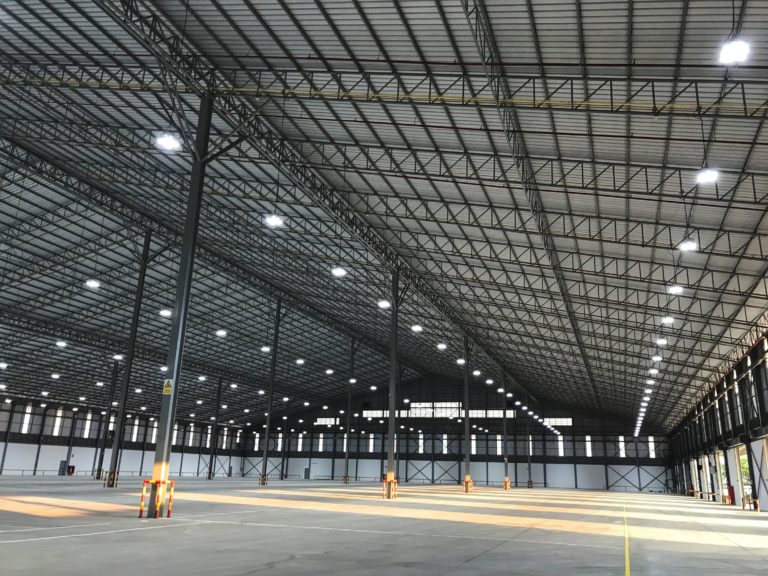To make this measure more effective and tailored to the specific context of your company, we recommend that you first perform an overall analysis of your energy situation.
Energy savings: lighting, a key element in energy consumption in the workplace
Lighting accounts for around 10% of electricity consumption in buildings. The potential savings are quite varied and depend heavily on the condition and management of the lighting system. In order to unlock the full potential, this measure proposes a range of optimisation measures, from simple practical initiatives to a complete overhaul of the lighting system.
Identification of lighting requirements
Analysis of the existing lighting situation, including outdoor lighting
- Analysis and series of measurements using a luxmeter to monitor light levels
- Inventory of all electrical lighting equipment currently in place
Taking a step further:
- Inventory of the current lighting consumption by a qualified professional (certified electrician)
Implementation of optimisation measures for lighting in companies
- Modernisation of lighting installations
- Determination of the minimum luminous intensity required according to the activity. The standard health and safety regulation “Lighting and workplaces” (ITM-CL 55.2) defines the minimum nominal luminous intensity to be respected according to the different activities.
For example: a meeting room requires a nominal light intensity of 300 lux. - o Replace the current lighting installation with a suitable one, considering the actual need and the following parameters: luminous flux guidance, glare effects, operating time, ease of maintenance and cleaning.
- For the replacement of the entire installation, it is recommended that you seek the assistance of a professional in the sector (approved electricians, consultancy engineering offices, manufacturers).
- Determination of the minimum luminous intensity required according to the activity. The standard health and safety regulation “Lighting and workplaces” (ITM-CL 55.2) defines the minimum nominal luminous intensity to be respected according to the different activities.
- Replacing light sources
- Choose new light sources based on light temperature and lumen output.
- Refer to the EU energy label for information on the bulb’s efficiency.
- Efficient regulation of the lighting installation
- Time-based regulation
- Installation of motion detectors
- Timers
- Dimming
- Twilight switches.
Smart lighting management system
Depending on the complexity of a company’s lighting situation, it may be worth considering the installation of an intelligent lighting management system. We recommend that you call in a qualified specialist or consultancy engineering office to assist you.
- Raising employee awareness
There are a number of simple actions that can rapidly reduce lighting consumption without compromising the comfort of the building’s occupants. Here are a few examples of such measures that are easy to implement and will help to reduce consumption:- turn off the lights when you leave the room
- install a timer to turn off all the lights at night
- install LEDs
- install motion detectors in high-traffic areas (corridors, car parks, stairs, bathrooms, etc.)
- make the most of natural daylight (position desks at 90° to windows, etc.)
- use additional lighting if necessary to evenly illuminate the work area
- install dimmable lighting and use it according to the intensity of natural light.
- When designing the building, ensure that spaces are optimised to provide the best possible lighting performance
- Maximise the use of daylight (e.g. skylights, glazed surfaces)
- Choice of materials: bright colours and translucency of partitions
- Install a timer to turn off all the lights at night.
- Create independent lighting zones
- Install dimmable lighting and use it according to the intensity of natural lighting.
- Install motion detectors in high-traffic areas (corridors, car parks, stairs, bathrooms, etc.).
- Guidelines for different applications in industry and commerce: Licht.de
- Use a lighting simulator, e.g. Dialux.
Subsidy application
Please note: any application for government or non-government subsidies must comply with the “incentive effect”, subject to compliance with the subsidy conditions.
In order to respect the “incentive effect”, no binding commitment (signing a quotation; paying a deposit) may be made BEFORE having received the agreement in principle from the State or the electricity and natural gas supplier following an application for subsidy.
Government subsidies
- SME Packages – Sustainability
- Financial Aid for small and medium-sized enterprises covering up to 70% of eligible costs for the implementation of a project aimed at reducing the environmental impact. The eligible project budget must be in a range from 3.000 € to 25.000 € excl. VAT.
- For more information:
- Chambre des Métiers for craft companies
- Chamber of Commerce for businesses in the non-craft sectors
- Environmental protection scheme – Subsidy for investments in environmental protection
- Verification of company eligibility and costs: General Directorate – Industry, New Technologies and Research
- Support in drawing up the subsidy application file prior to submission to the Ministry of the Economy
- For more information: Luxinnovation
- More information and guidelines on environmental investment for companies is available in the Simplified Guide for Companies (FR)
N.B.: Government subsidies cannot be combined for the same project.
Application for subsidies from electricity and natural gas suppliers
As of 2015, natural gas and electricity suppliers are obliged under the Commitment Mechanism to generate energy savings among their consumers. Since then, energy suppliers have been offering monitoring and advisory services as well as subsidy programmes for consumers to implement energy efficiency measures.
The providers offering this service to companies are as follows:
- Enoprimes Enovos + SUDenergie
- SUDenergie
- Sudstroum
Note that supplier subsidies can be combined with any government subsidy for the same project.
